Located in the south western reaches of the African continent, Namibia boasts a well-developed infrastructure, some of the best tourist facilities in Africa and an impressive list of breathtaking natural wonders.
Visitors can explore the capital of Windhoek and discover the lovely coastal town of Swakopmund, boasting remnants of the country’s German influence reflected in the architecture, culture, cuisine and the annual Oktoberfest celebrations. But to properly appreciate this extraordinary country, guests need to venture out of these two towns to explore the remarkable natural landscapes Namibia has to offer. These include the impressive Fish River Canyon, the world's second largest canyon, the vast Etosha National Park teeming with abundant wildlife, the hauntingly beautiful Kalahari Desert and of course the Namib Desert, the oldest desert in the world, stretching for over 2000 km along the Atlantic Coast.
Namibia is undoubtedly an ideal destination for travellers seeking an unforgettable African experience in a uniquely beautiful and untamed wilderness. (ITT)

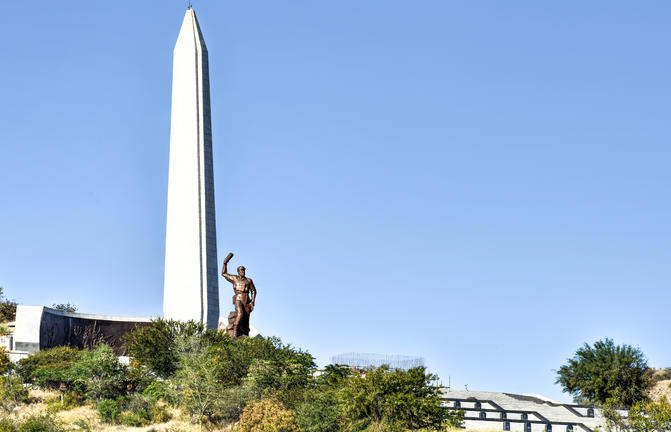
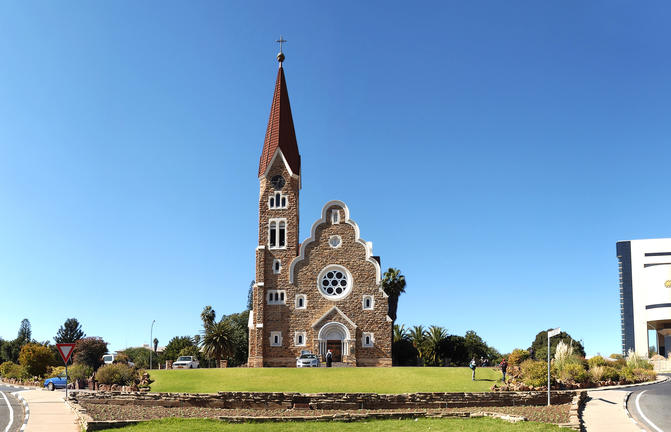
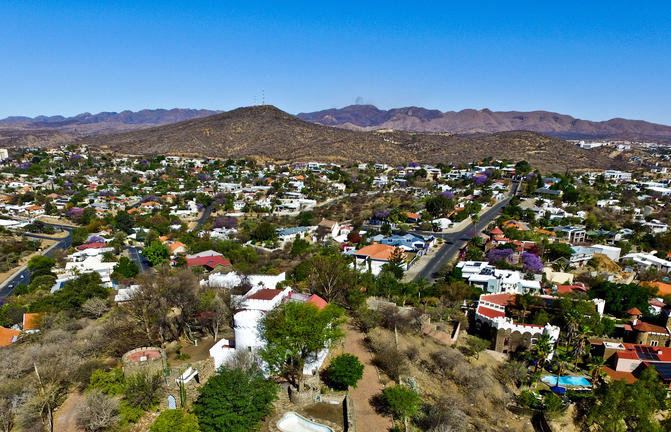
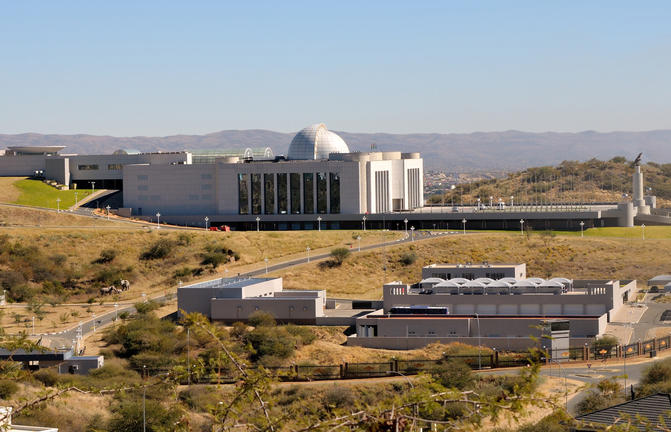
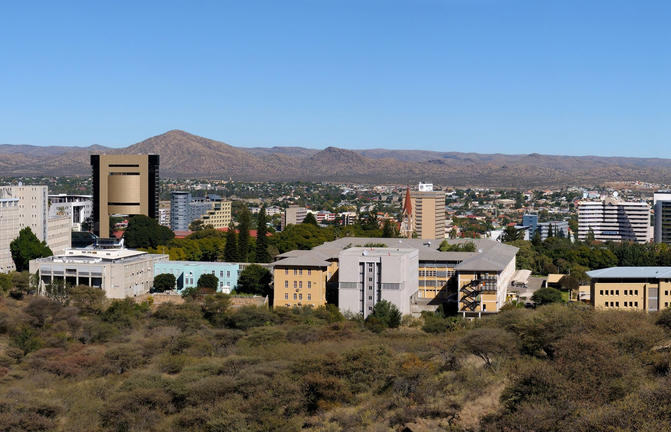
Situated in Central Namibia, the cosmopolitan city of Windhoek serves as the capital of the country. It is home to an international airport and a plethora of restaurants, shops, entertainment venues and accommodation options. The city is clean, safe and well-organised, with a colonial legacy that is reflected in its many German eateries and shops, and the widespread use of the German language. Windhoek has an interesting mix of historical architecture and modern buildings, many of which are worth a look, including the Alte Feste an old fort, the 1896 Christuskirche Christ Church, and the more contemporary Supreme Court.
Spreading across Botswana, South Africa and Namibia, the Kalahari meaning 'the great thirst' is an exceptionally beautiful living desert. The landscape is characterised by a large semi-arid sandy savannah draped over a gently rolling inland sea of sand covering most of Botswana and large parts of Namibia and South Africa.
It is also the last bastion of the indigenous San people with the modern world having enveloped all the other areas they once roamed. The Namibian portion is made up of red sands covered in thin, wispy, mostly golden grass and dotted with acacia trees and wide-ranging wildlife including gemsbok, impala, jackals and cheetah. (ITT)
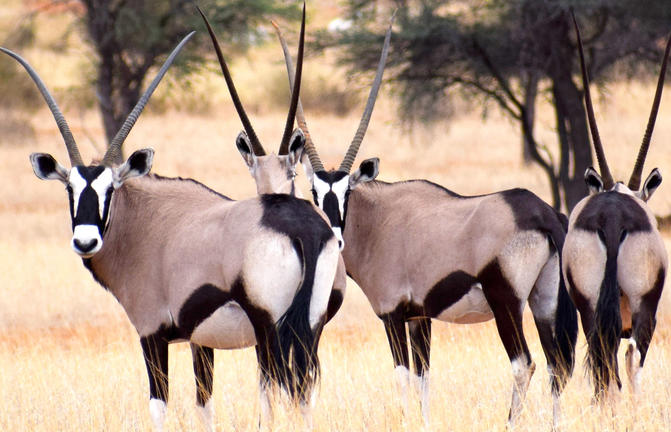
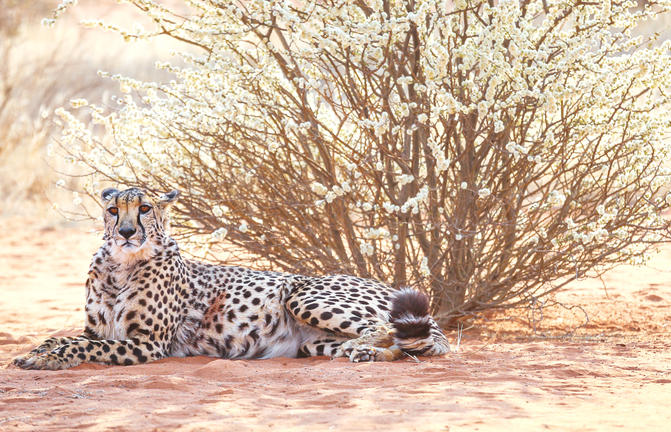
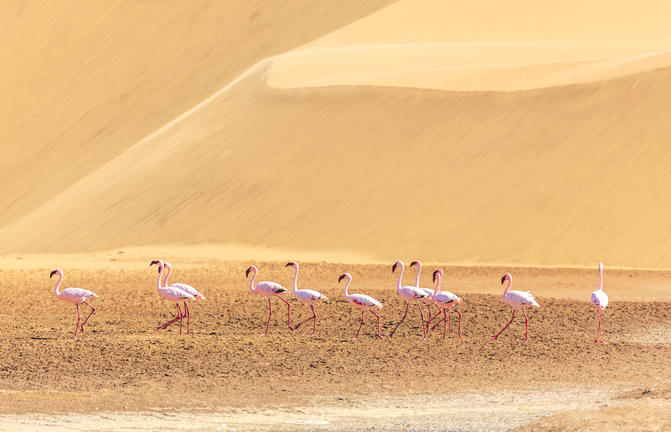
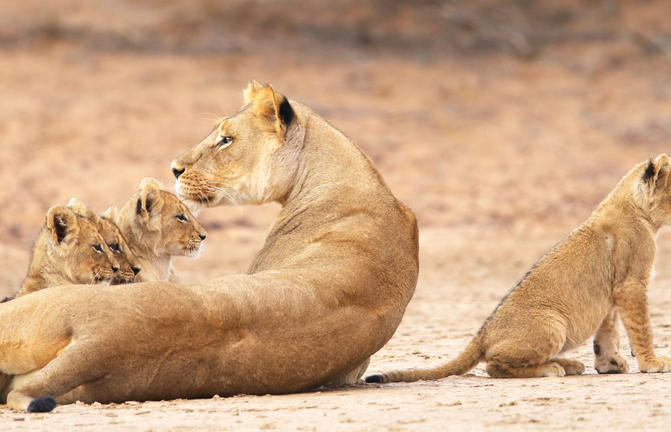
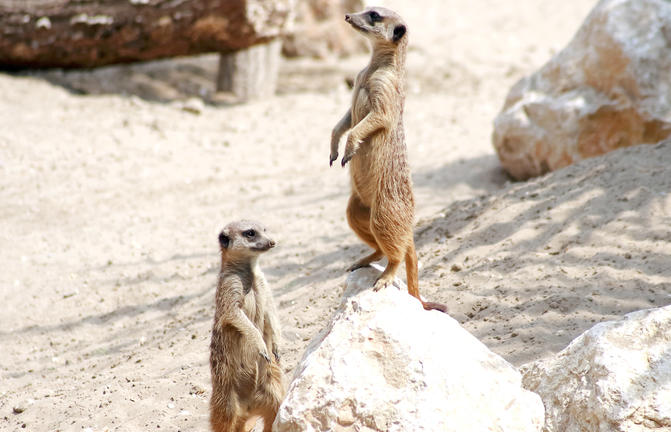
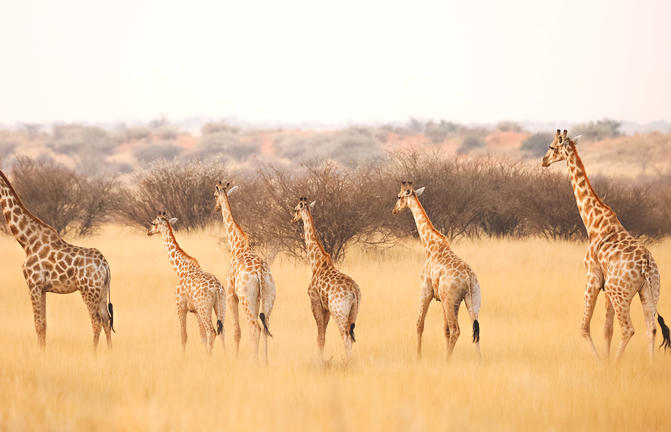
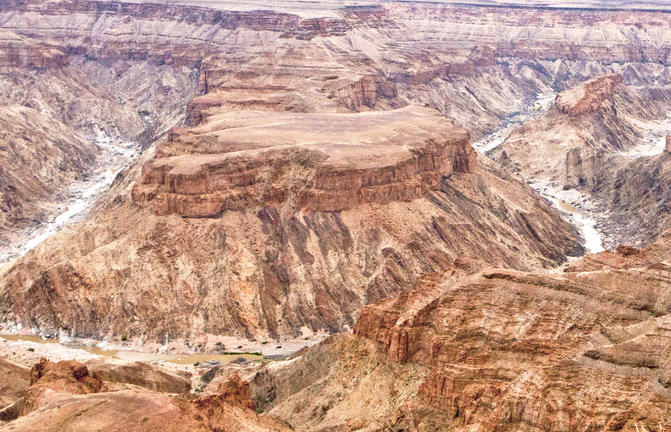
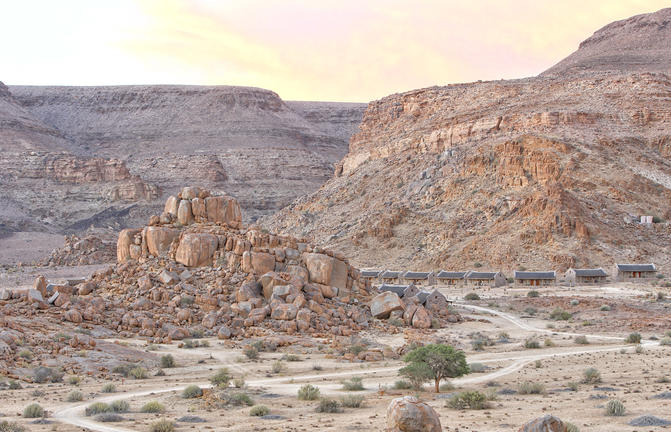
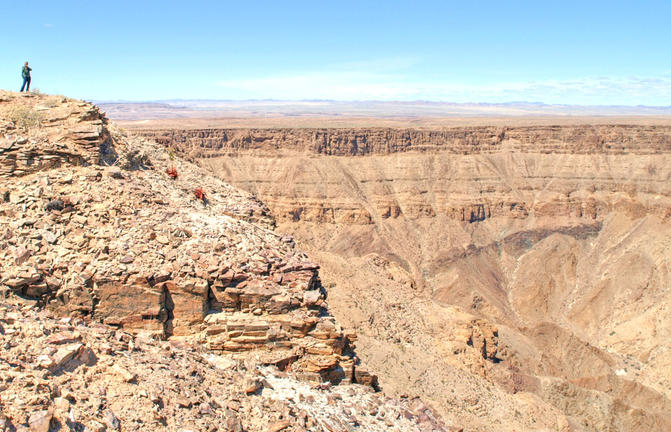
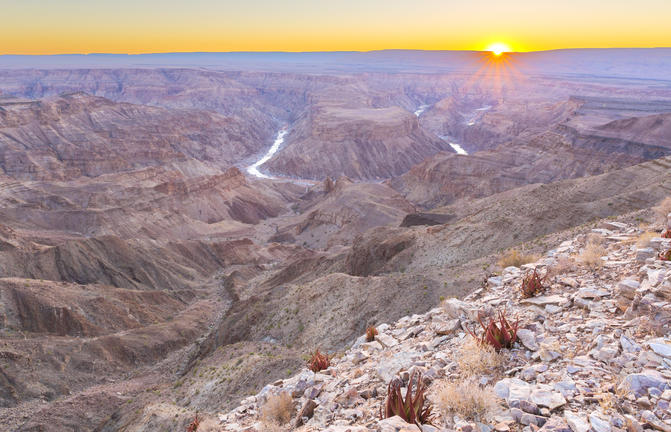
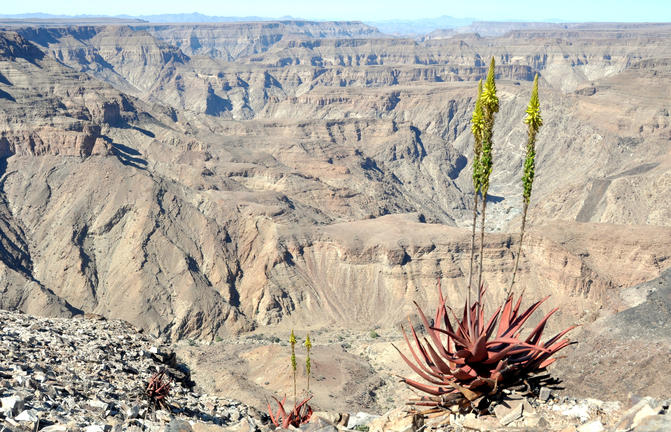
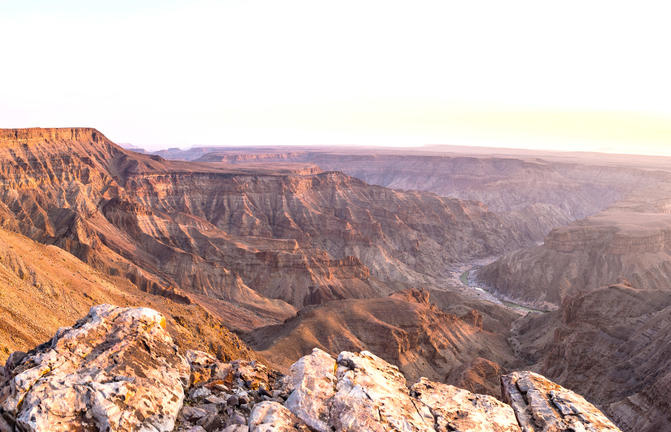
Carving out an epic rocky wonderland in the south of Namibia, the Fish River has created Africa’s largest and the world’s second largest canyon. Hot, dry and stony, the Fish River Canyon measures a whopping 160 kilometres in length, at times 27 kilometres in width and 550 metres in depth. The awe-inspiring natural beauty of this ancient geological marvel draws visitors from around the globe. For those looking for adventure, the intense 85 kilometre Fish River Hiking Trail through1.5 billion years of geological history will definitely thrill avid adventure enthusiasts, and for visitors looking to relax, head over to the canyon's southern end to enjoy a soak in the mineral waters of the renowned hot springs of Ai-Ais, or take in the spectacularly scenic views from Hobas Restcamp as well as numerous other viewpoints along its rim. Other popular activities include: scenic chartered flights, horse riding, nature drives and seasonal kayaking.
Perched above the plains of the Namib Desert and tucked away in the rocky Aus Mountains, the small village of Aus is located in the ǁKaras Region in southern Namibia.
The arid surrounding landscape is known for its unique botanical diversity. Visitors can explore the Succulent Karoo with a visit to the beautiful Gondwana Sperrgebiet Rand Park, home to the most biodiverse desert in the world, and take a scenic hike to discover the fascinating indigenous fauna and flora.
Aus also serves as an excellent base from which to explore the area and to view the main attraction: the feral horses of the Namib Desert, which run wild and free in the sparsely vegetated plains. Catch a glimpse of these wild desert-adapted creatures at the water trough at Garub just twenty kilometres away from the village.












Lüderitz is a coastal town in southwestern Namibia. It’s known for its German colonial buildings, including the art nouveau Goerke Haus, built into the rock face on Diamond Hill. Nearby, Felsenkirche is a hilltop church with panoramic bay views stretching around to Robert Harbor. The Lüderitz Museum has displays about the town’s diamond-mining past as well as local and natural history.
The ghost town of Kolmanskop, located inland, approximately 10 kilometres from Luderitz, has been taken over by the desert and is one of the most fascinating attractions of Namibia. Visitors can also take a trip to discover the wild desert-adapted horses located near the small town of Aus. (ITT)
Situated in southwestern Namibia at the edge of the world-renowned Namib Desert, the Tiras Mountains provide the perfect backdrop for visitors who venture to this red granite wonderland and immerse themselves in the natural beauty of this region. Namibian landscapes are synonymous with tranquility, serenity and endless open spaces and the magnificent Tiras Mountains encapsulate this quiet charm. Nature lovers flock here for an off-the-beaten-track experience in one of Namibia's most beautiful areas. Visitors can enjoy thrilling 4X4 mountain and dune tours, nature walks, game and bird viewing as well as excursions through quiver tree forests and to ancient rock paintings on granite rocks. Visitors can relax at one of the luxurious farm lodges after a wonderful day of activities, or get up close with nature while camping in this beautiful desert wilderness.






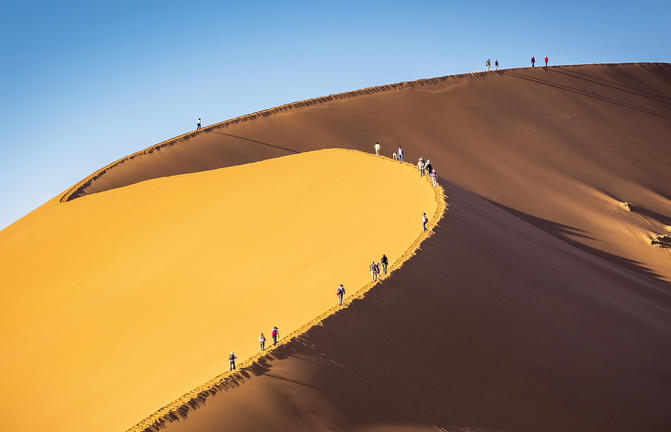
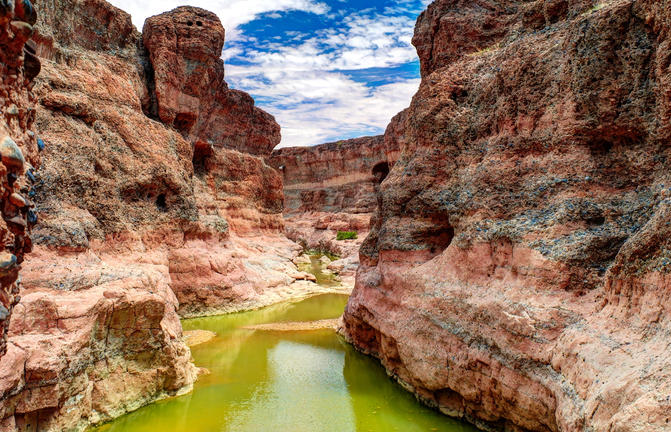
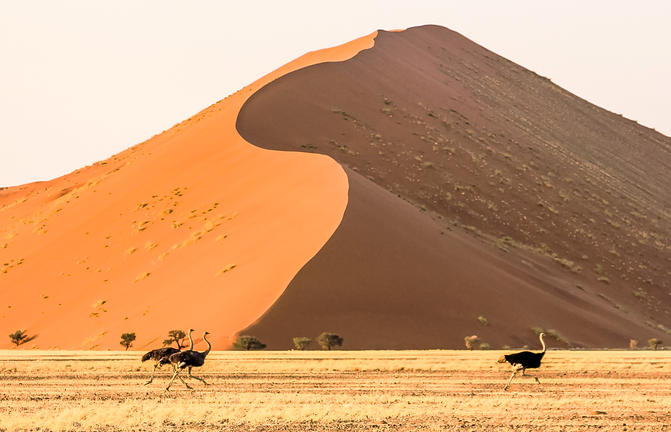
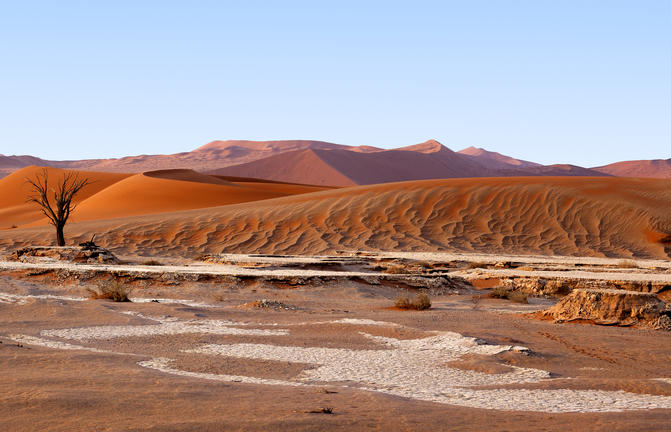
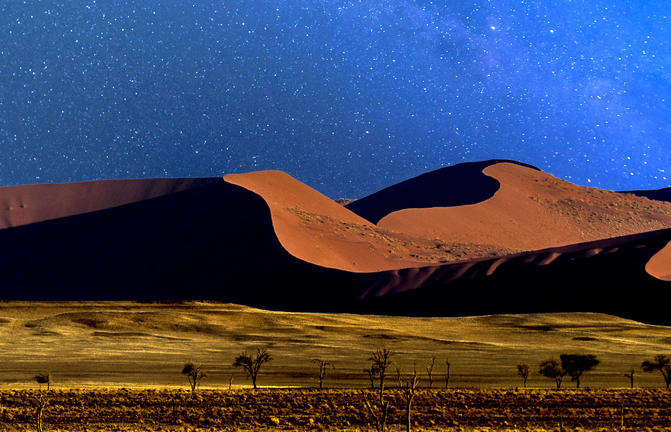
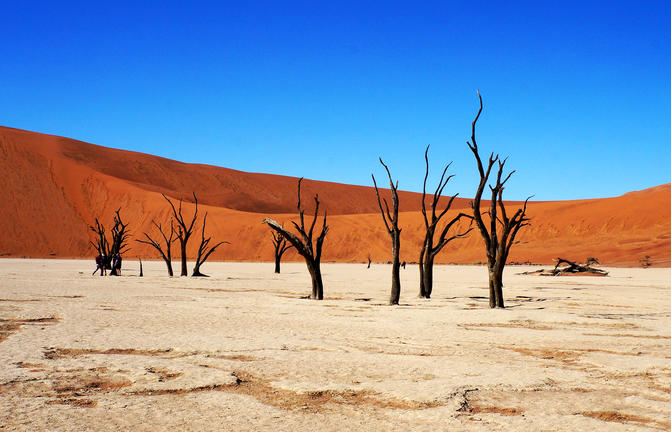
As there is no accommodation at Sossusvlei, visitors to this desert wilderness are likely to end up staying at Sesriem, 65 kilometres away, where camps and lodges serve as a base from which to explore the dunes. Sesriem Canyon, a deep chasm carved through the rocks by water, is a striking natural feature of the area that is best explored on foot. Stony walls rise up sharply on both sides of the canyon, while birds roost in its crags and lizards dart along the ledges. The canyon’s name was coined when early settlers used it as a water source, using six lengths of leather (‘ses riem – six thongs) tied together to lower buckets into the water at the base of canyon.)
Set along Namibia's coast on the Atlantic Ocean and surrounded by desert, the seaside town of Swakopmund is known for its wide avenues and beautiful colonial architecture.
Founded in 1892 as the main harbour for German South West Africa, Swakopmund is often described as being more German than Germany. Now a town with a distinctively resort character with plenty to keep its visitors busy, Swakopmund is the capital of the Skeleton Coast tourism area. The quirky mix of German and Namibian influences, adventure options and laid back atmosphere make it a popular Namibian destination. Visitors can look forward to a number of activities including quad biking, horse riding, paragliding, fishing, sightseeing, excursions to Sandwich Harbour or the seal colony at Cape Cross, scenic flights and fascinating desert tours. (ITT)


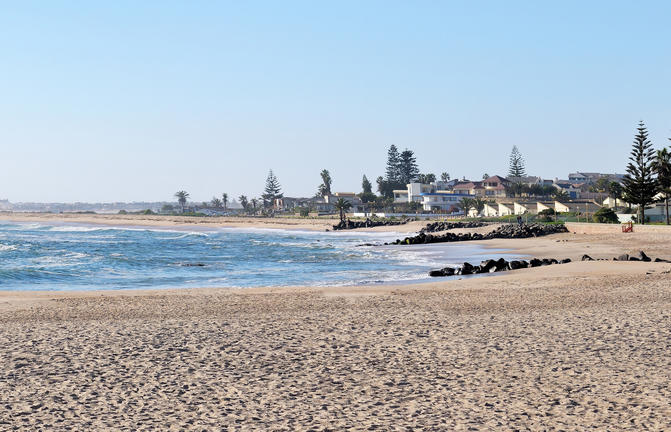
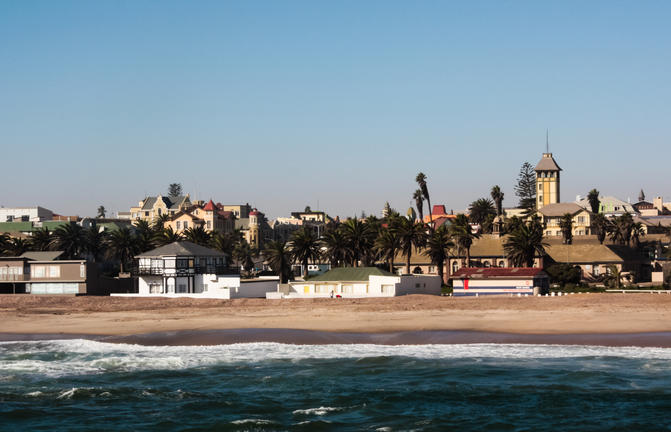
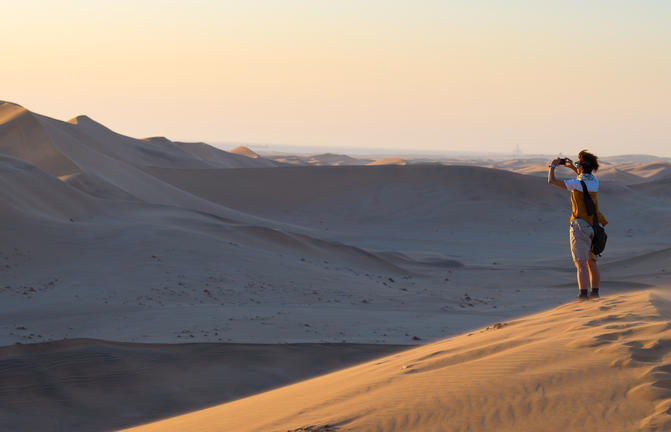
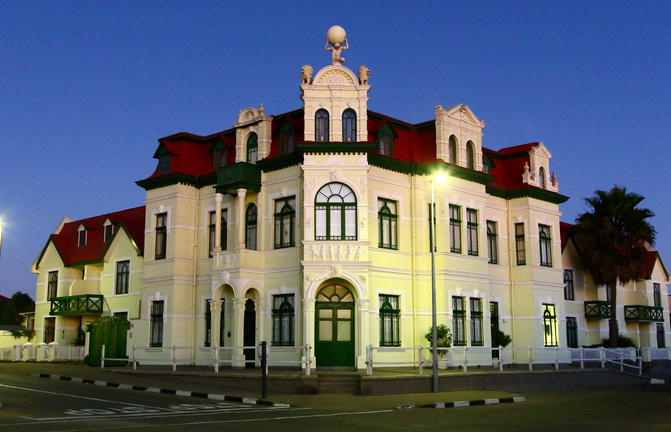
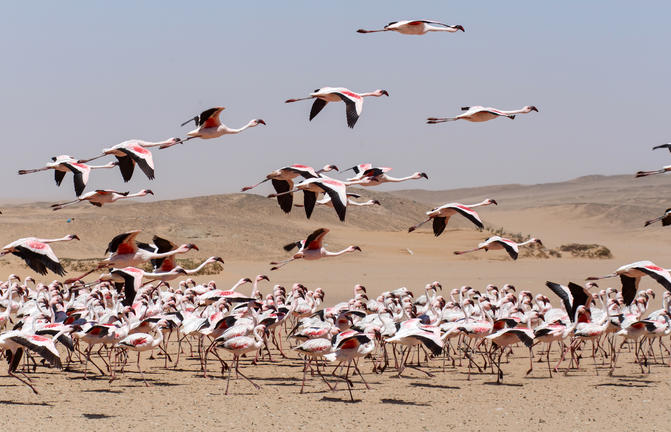
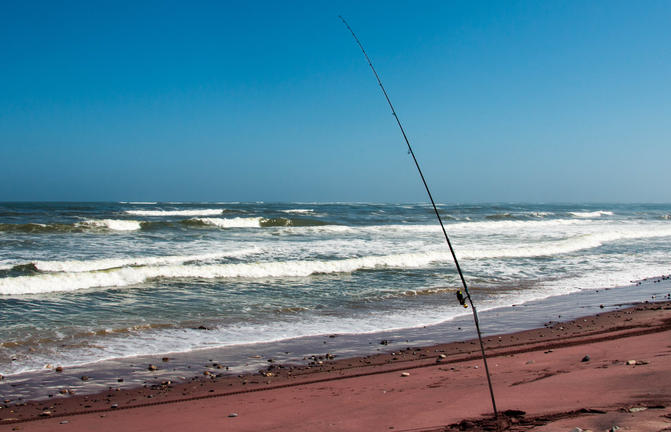
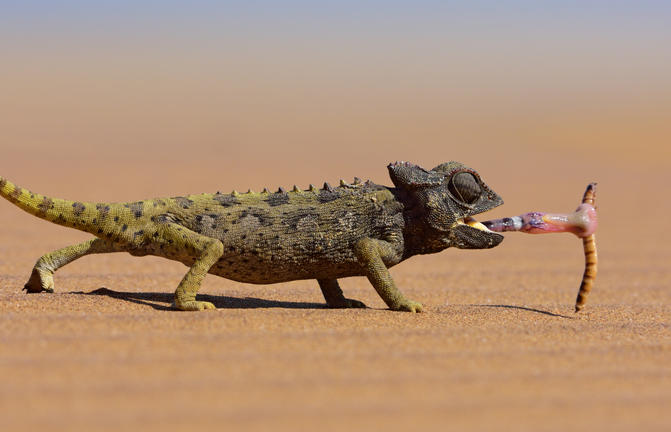
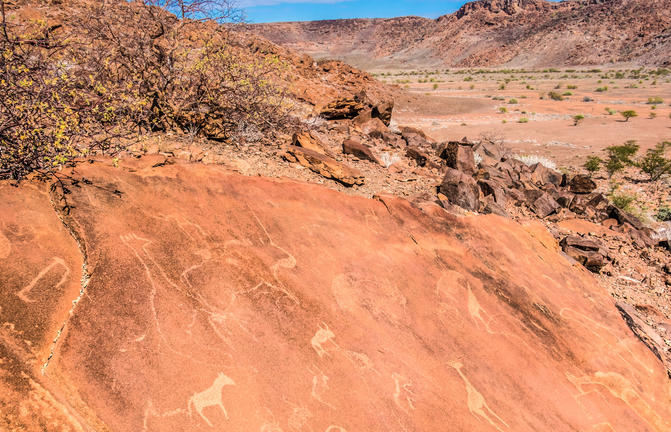
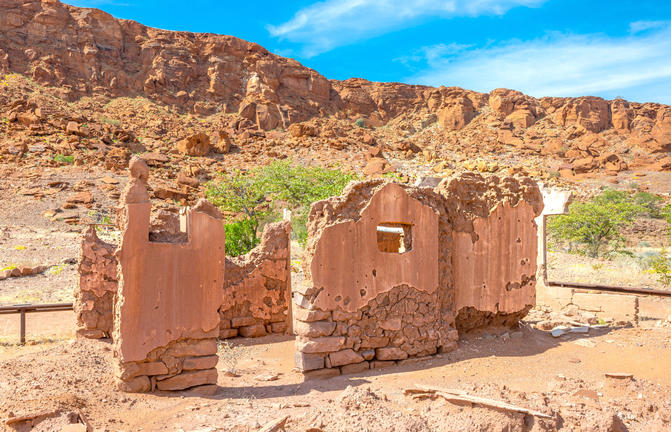
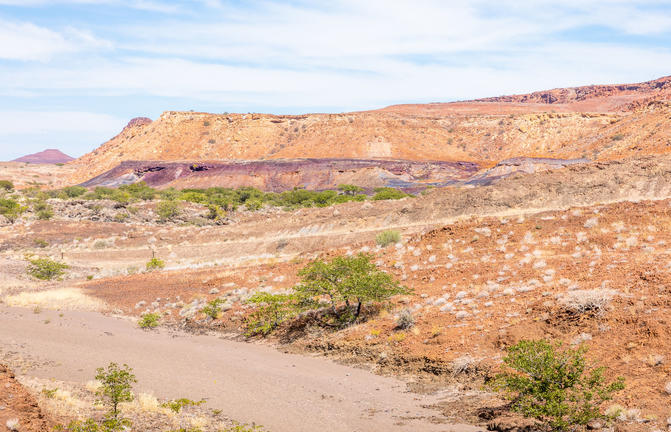
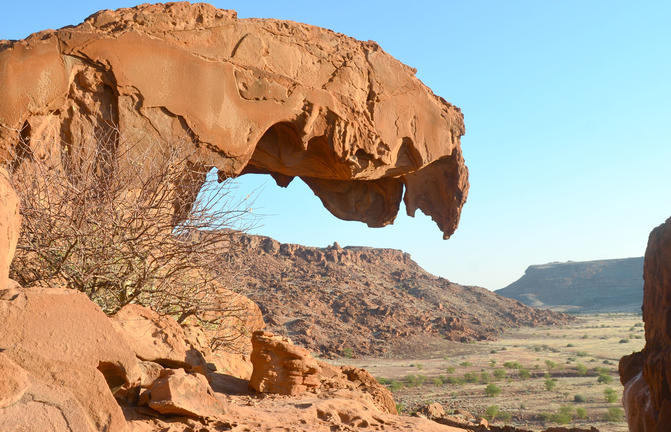
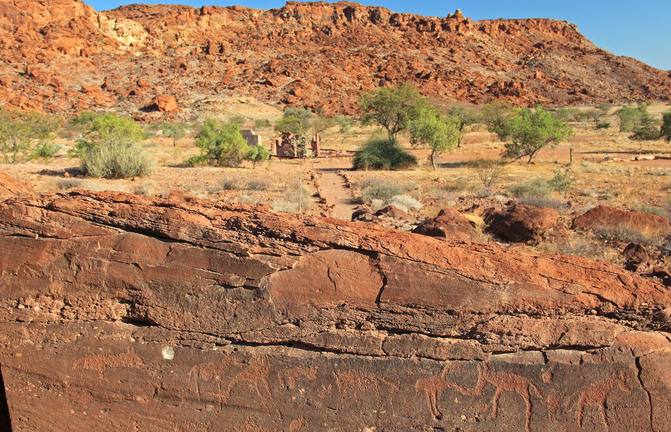
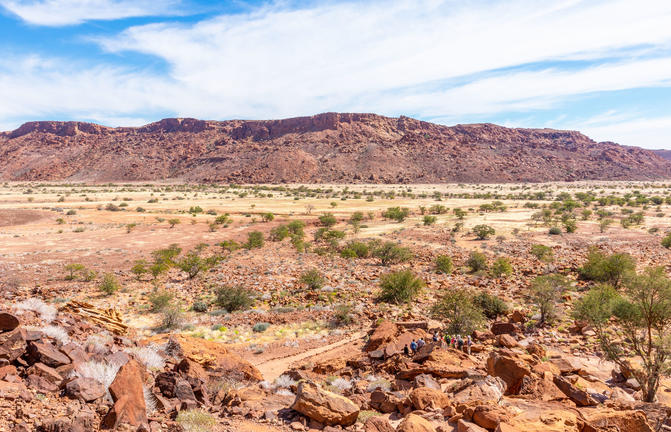
Set in the Kunene Region of northwestern Namibia, Twyfelfontein is a particularly scenic area, featuring one of the largest and most important concentrations of rock art in Africa.
The name ‘Twyfelfontein’ translates to ‘Fountain of Doubt’, which refers to the perennial spring situated in the impressive Huab valley flanked by the slopes of a sandstone table mountain. It was this spring that attracted Stone Age hunters over six thousand years ago, and it was during this time that the extensive group of rock engravings and paintings were produced. Visitors can look forward to basing themselves at some wonderfully shady campsites along the Aba-Huab riverbed, while exploring over thirty different sites of these sacred records of ritual practices relating to traditional hunter-gatherer communities.
Etosha South is located just south of the world famous Etosha National Park in northwestern Namibia. Several private game reserves share a boundary with Etosha National Park, others are a bit further away towards Outjo. The access for all guests to Etosha, be it on a guided safari or in their own vehicle, is via the southern entrance at Andersson’s Gate.
Etosha is home to a great variety of wildlife including lion, giraffe, elephant, white and black rhino, giraffe, zebra, springbuck and a multitude of plains game. Popular activities include guided or unguided game drives, tracking rhinos on foot with a game ranger, guided nature walks, or simply watching the sun set over this magnificent landscape.
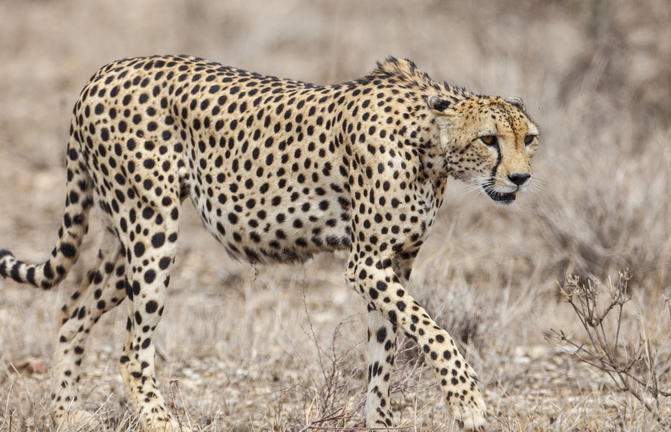
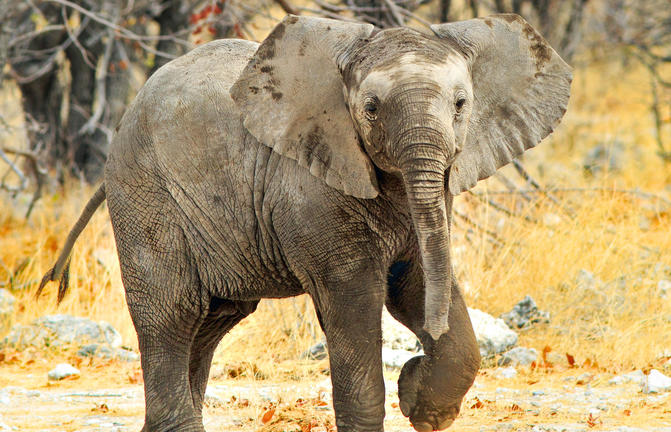
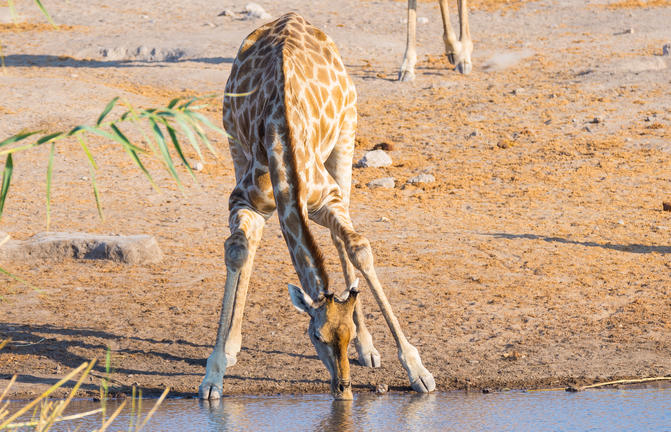
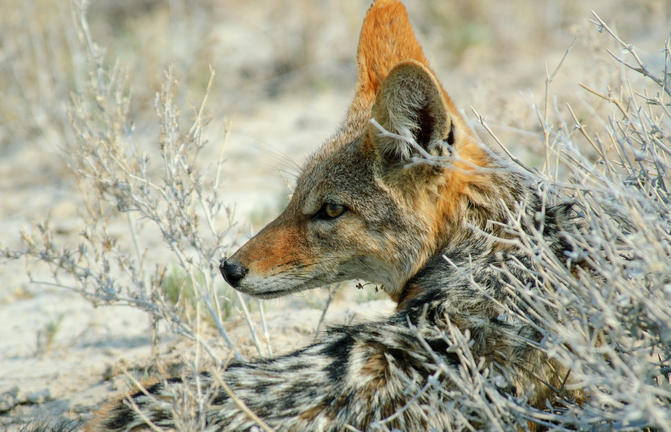
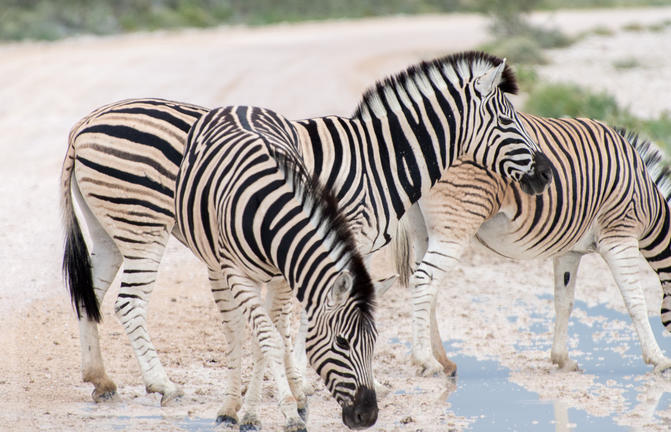
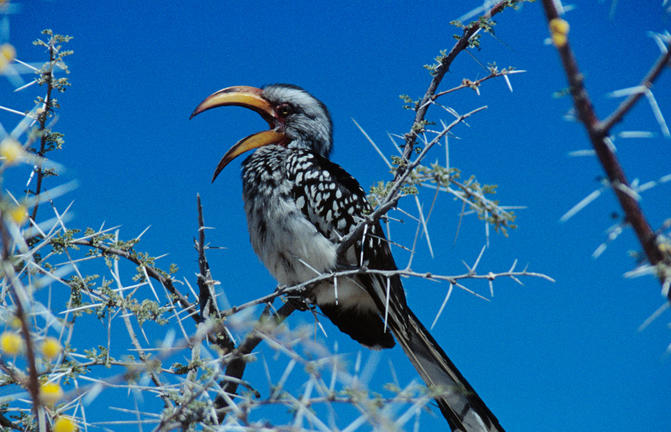
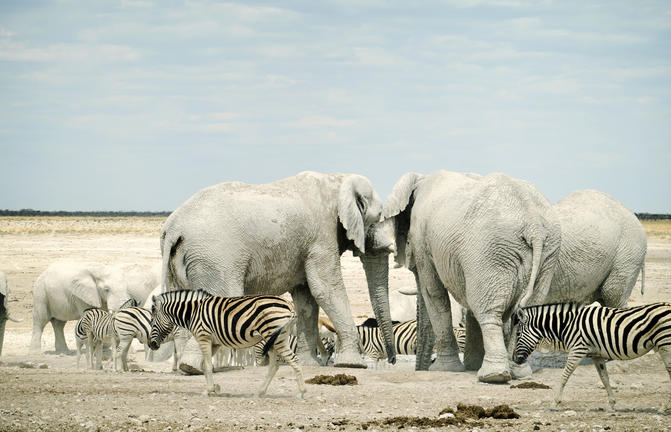
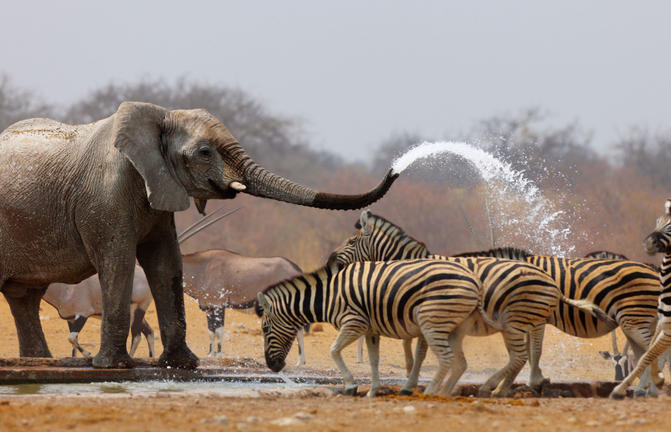
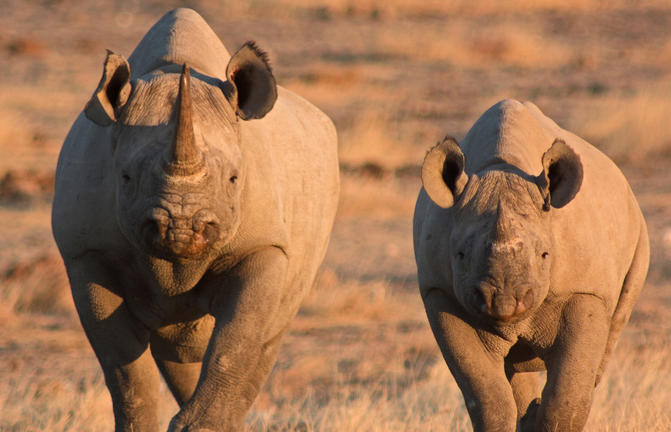
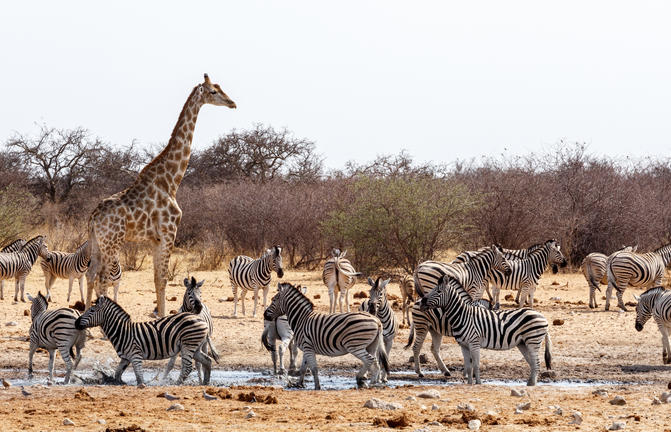
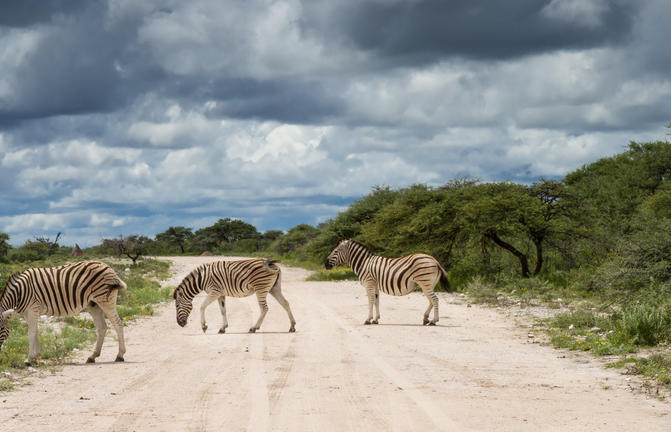
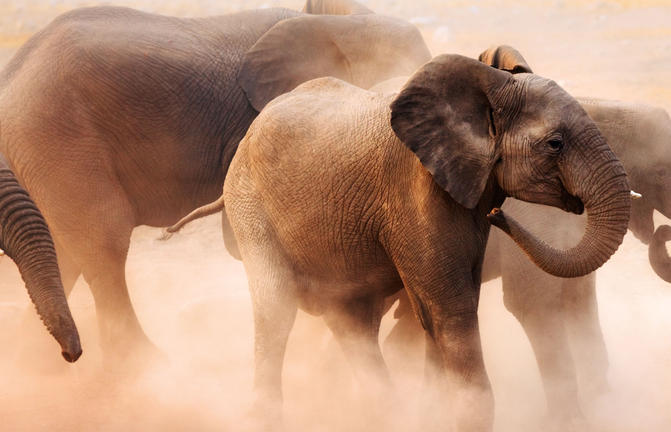
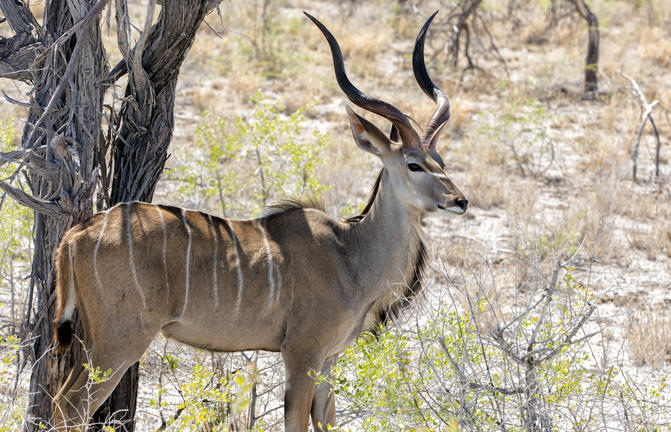
Located in Northwestern Namibia, Etosha East is a protected sanctuary in the eastern part of the world-renowned Etosha National Park, known as one of the most accessible game reserves in Southern Africa. Etosha East boasts vast open plains scattered with semi-arid savannah grasslands dotted with watering holes and secluded bush camps.
An impressive 5000-square-kilometre salt pan makes up a large area of the eastern side of the Etosha National Park and can even be seen from space. This remote area teems with abundant wildlife such as lions, elephants, black rhinos and giraffes, as well as a variety of birdlife featuring flamingos, ostriches, eagles, hornbills, and owls.
Situated in north central Namibia and named for the springs that emanate from its foothills, the Waterberg Plateau National Park is a fascinating geological site featuring compressed sandstone crags, 200-year-old dinosaur footprints, and petrified sand dunes. The area’s natural water sources make it far more fertile than its environs, and the park is blessed with a plethora of plant and animal species, including leopards, rhinoceros, vultures, cheetahs, bush babies, ferns and fig trees.
Visitors can enjoy a wide selection of activities including: learning about the local Herero culture on an informative village tour, tracking rhino on a guided safari, exploring the Waterberg's 50-kilometre-long and 16-kilometre-wide sandstone plateau, dubbed 'table mountain', and catching a glimpse of the rare and endangered sable and roan antelope.












As previously described

